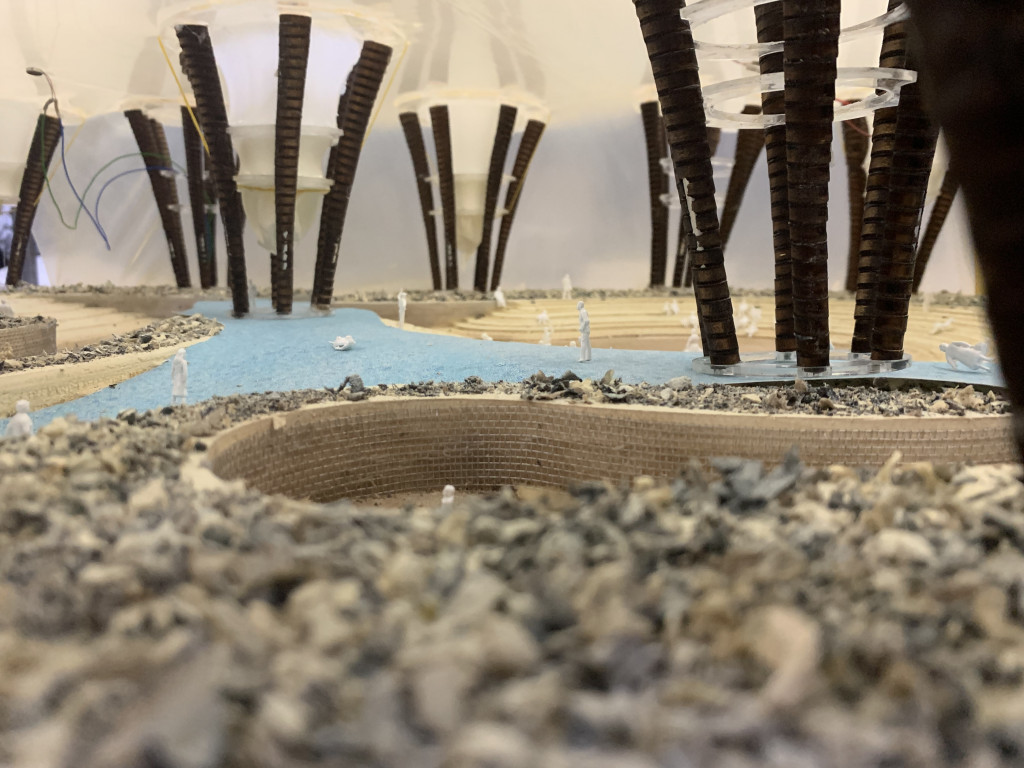 Syrian Conflict: Oasis
Syrian Conflict: Oasis
_Self Sufficient Building Studio

Syria has been in Civil War since the Arab Spring uprising spread across the Middle East in 2011.
What began as peaceful protests turned into a full governmental crack-down, and within months the Free Syrian Army rebel group was formed against the Assad Government regime.
Eight years on, and the combat forces have disseminated into many many different groups, with differing agendas. As the war compromised Russian air bases and US oil companies assets, international armies have weighed in on the conflict too.
Chemical attacks have been reported with alarming frequency, raising further international urgency to resolve the conflict…
Unlawful demolition of housing has been reported in main fighting centres across the countries, namely in 2012-2013, where razing of entire neighbourhoods saw many citizens displaced and forced to migrate elsewhere, such as Turkey and Lebanon.
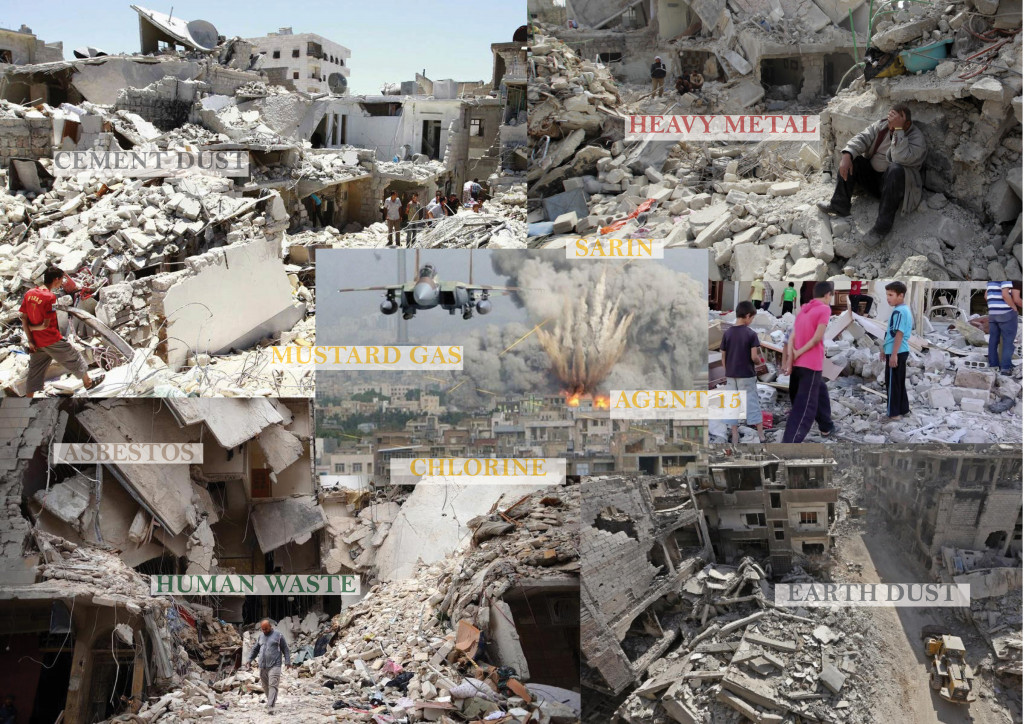
Mass destruction has released harmful particles into the air.
Oasis, a public plaza, is intended as an urban safe zone where visitors are protected from the harmful airborne particles and which actively defends citizens against aircraft attacks.
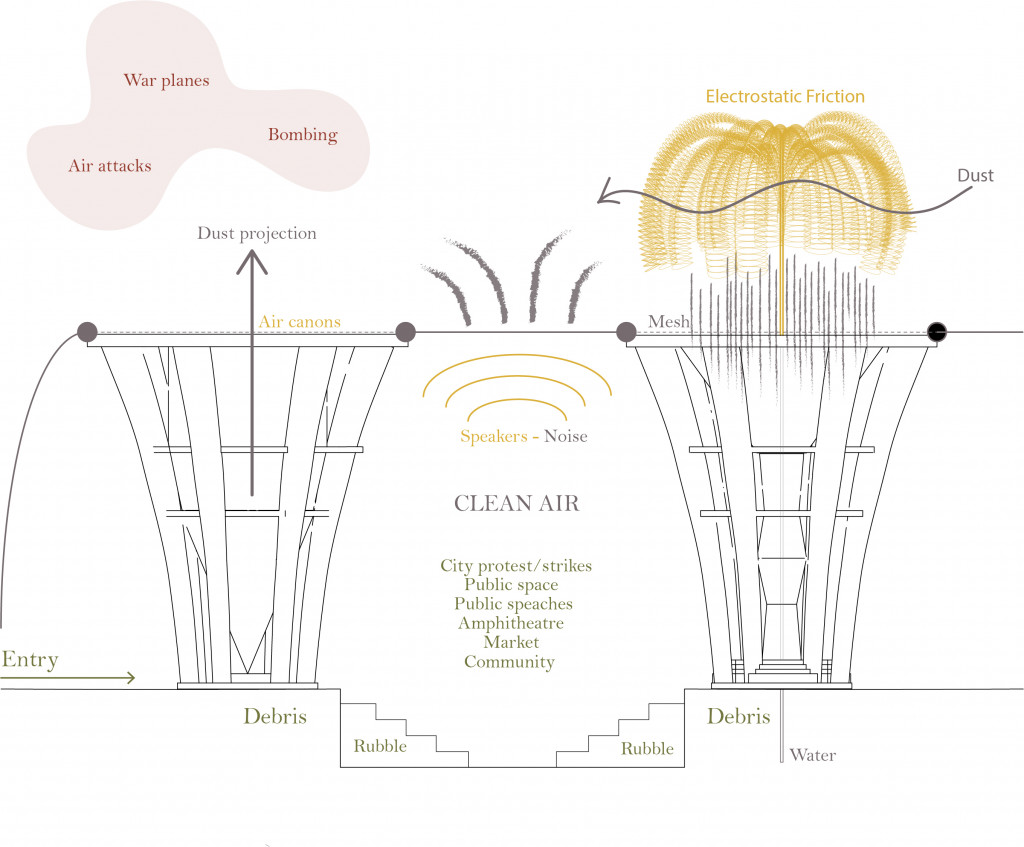
The site for Oasis is in central Damascus – a city particularly targeted during the civil war. The plot of land it occupies has been historically vacant, resting as a dusty section of nothing. It is in close proximity to Tishreen Park, local Universities, mosques and political buildings. 
The site rests upon the once-flowing river Barada. We have used its path as a symbolic Promenade through our building, emphasised with local Damascan tiles. The water source below ground will be harnessed for filteration purposes.
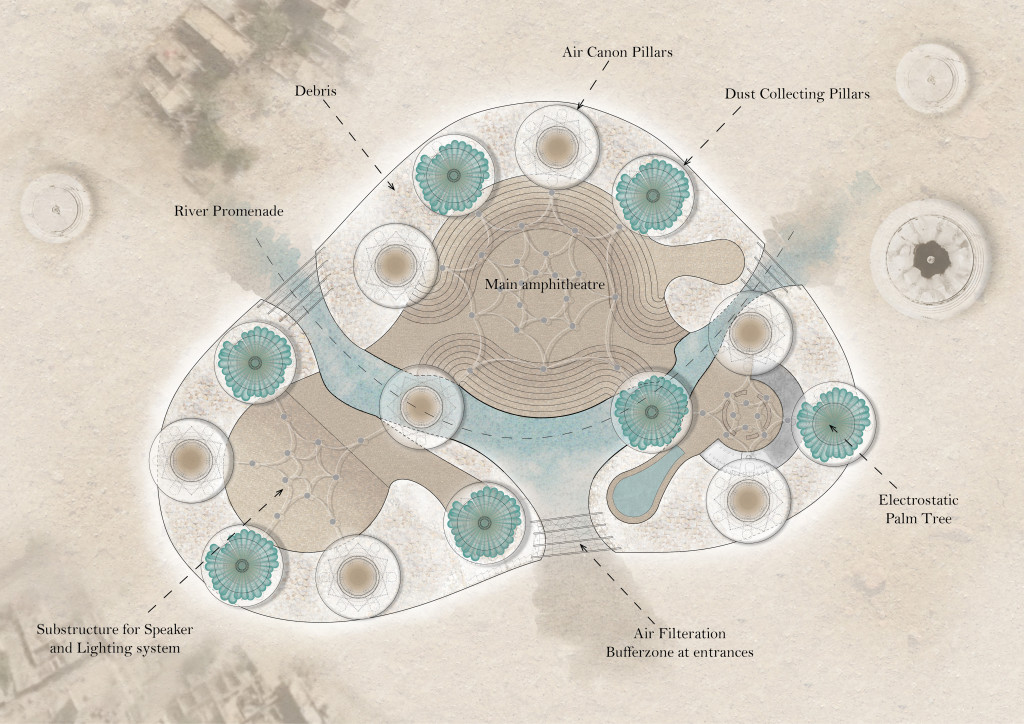
Key features of the building include an air filtration buffer zone at each of the 3 entrances, which purges dust from entrants with air pistons, and captures loose particles with a paper flag canopy above.
The pillars double as commercial kiosks at ground level.
There are built-in Service areas and play zones, including prayer rooms and bathrooms.

There are three main gathering spaces, the largest of which is designed as an amphitheatre,
where large events/ performances / demonstrations can be held.
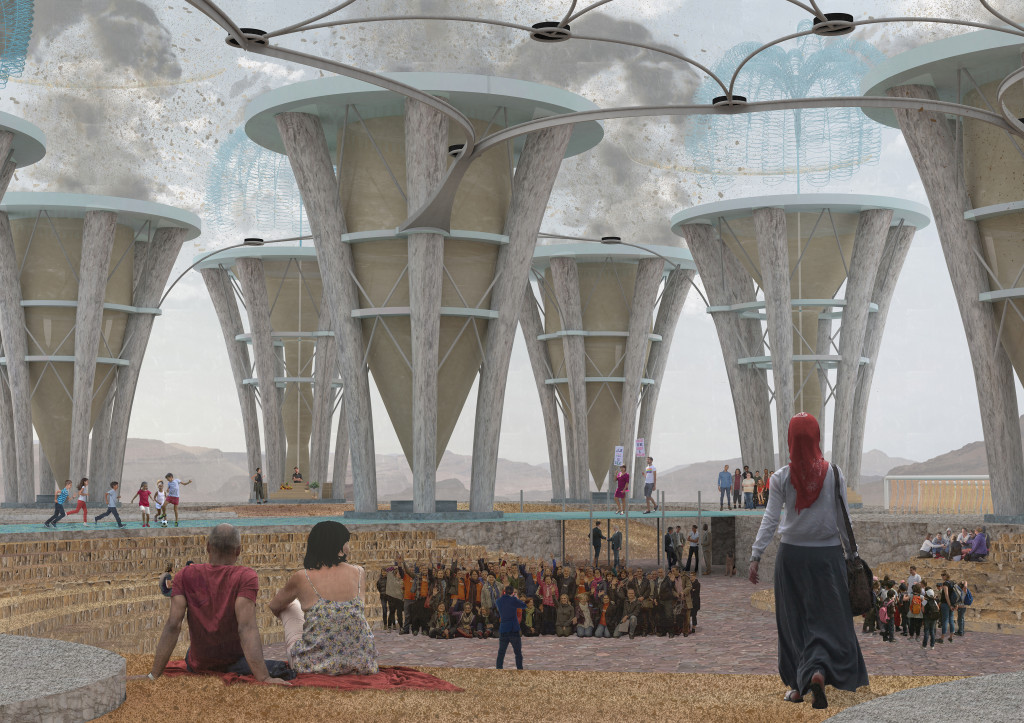

A metal mesh cage, forming the contours of the plan walls will be designed and installed on site.
Then citizens can deposit Debris gathered from across the city inside of the cages until the form of the building is filled.
The surfaces will be finished with a layer of cobblestones or bricks, curated from the rubble to create a transversable flat surface.
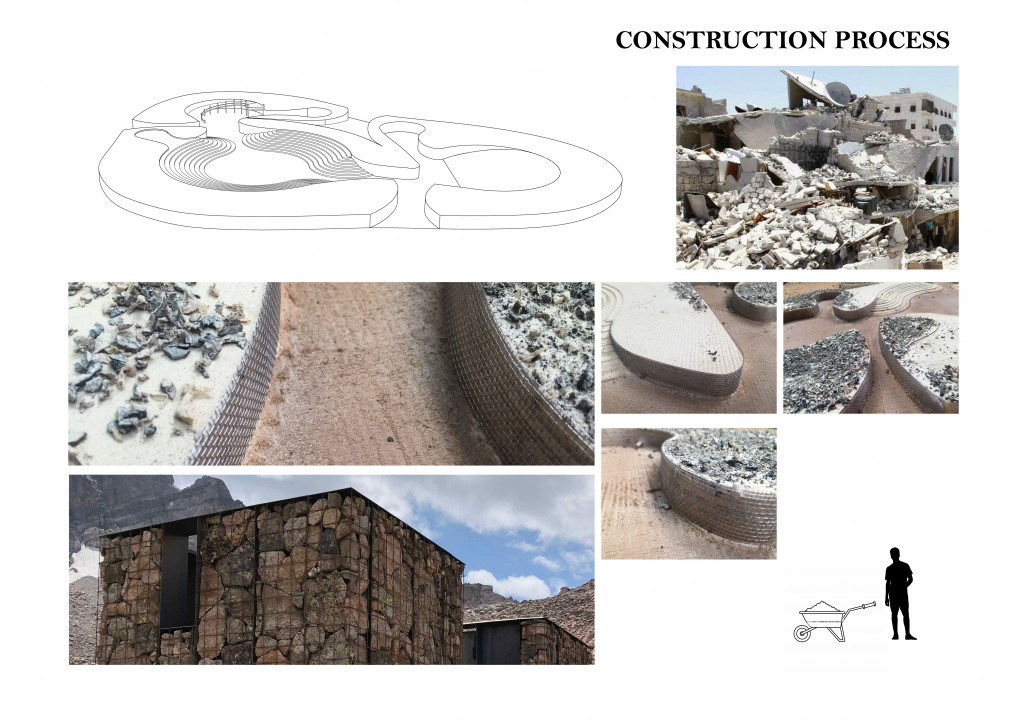
Sound Effects
The mesh surface which wraps the building, is in such tension that sound vibrations will cause loose dust which rests on top of it to float as a blurry cloud above the building. This will act to camouflage the building from clear satellite footage.
During an air-raid, the siren speaker system will also be activated to amplify the dust haze.
The pillars have integrated air canons, which collect dust until the time of an air raid, where they can be released to fire dust far into the sky above, effectively blocking planes and helicopters flight paths over-top.
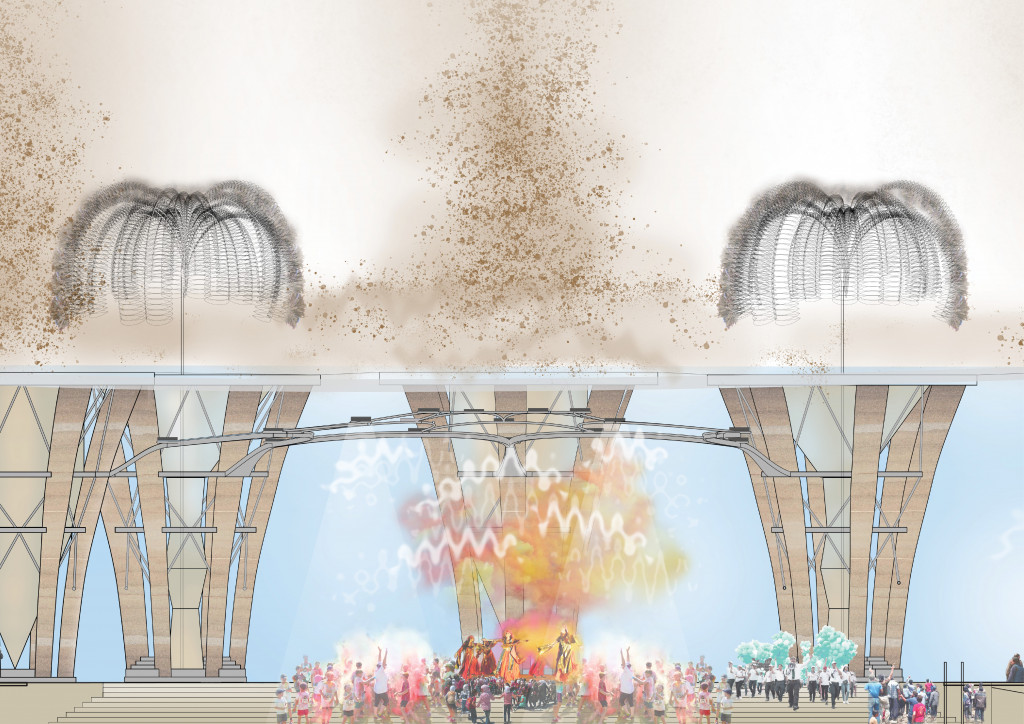

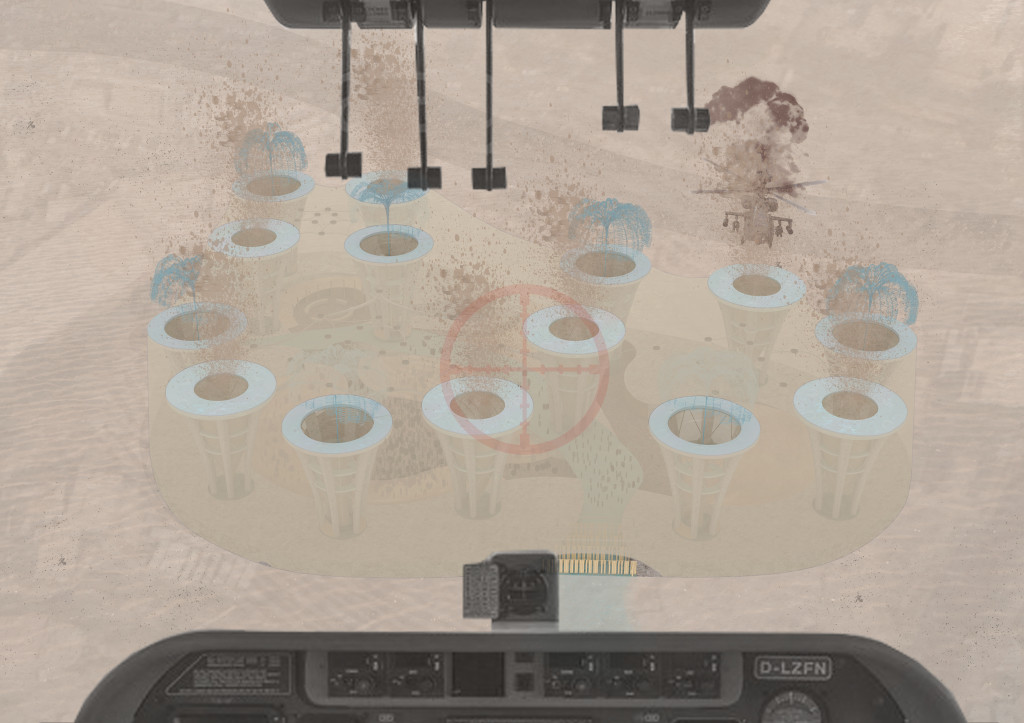
“Syrian Conflict: Oasis” is a project developed at IAAC, as part of the Masters of Advanced Architecture program of 2018-19, during the Self-sufficient Building Studio
Students: Hena Micoogullari, Holly Carton, Jose Pastor, Megan Smylie
Tutors: Mireia Luzarraga, Alejandro Muino, Enric Ruiz-Geli
Student Assistants: Francois Nour, Rasheed Mohammad